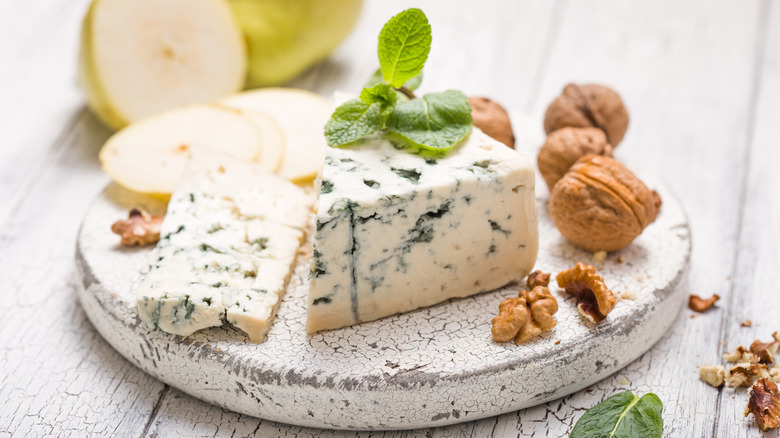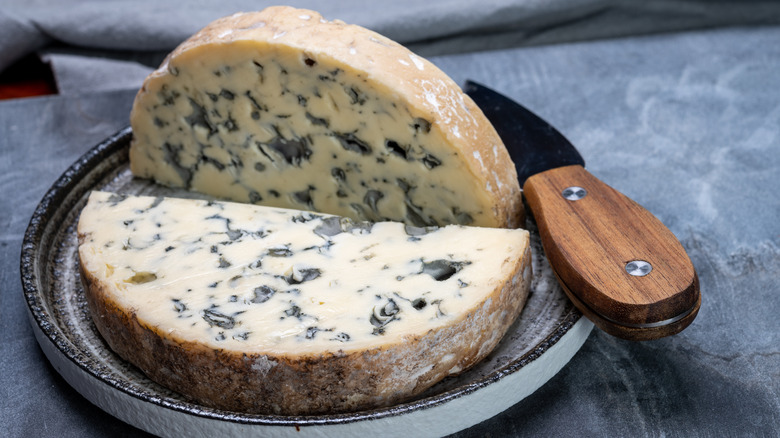Is Blue Cheese Bad For You?
Blue cheese is a general term used to describe cheeses made with cultures of the mold Penicillium, which can appear as blue or gray spots or veins throughout the cheese. According to Livestrong, this mold is what gives the cheese its distinctive smell and taste. Made with either cow's milk, goat's milk, or sheep's milk, blue cheese is rich in important vitamins and minerals, like calcium, vitamin B6, and vitamin B12. However, it also tends to be rather high in fat.
There are 3 different types of blue cheese: Danish blue, Stilton, and Roquefort. Danish blue was originally created in Denmark, while Stilton is an English cheese. Roquefort, on the other hand, is a particularly pungent type of blue cheese originating from France. All 3 types of blue cheese have high salt and fat content, although Danish blue generally contains less fat than Stilton and Roquefort. For instance, a 100-gram serving of blue cheese can provide as much as 45% of the daily recommended intake of fat.
Is the mold in blue cheese safe to eat?
Although you should generally avoid eating food with mold on it, this doesn't apply to blue cheese. That's because Penicillium mold doesn't produce any mycotoxins, which are toxic to humans. As a result, the mold in blue cheese is perfectly safe to consume. According to Healthline, however, blue cheese can go bad and eventually produce the type of mold you want to avoid eating.
Blue cheese can last anywhere between 3-4 weeks in the refrigerator and even longer if frozen. At some point, however, it will start to go bad and show signs of spoilage. If you see any unusual fuzzy spots on your blue cheese, you should get rid of it. Eating spoiled cheese can cause gastrointestinal symptoms, like nausea, vomiting, and diarrhea. In addition, accidentally eating toxic mold can potentially suppress your immune function and cause a slew of digestive issues.


